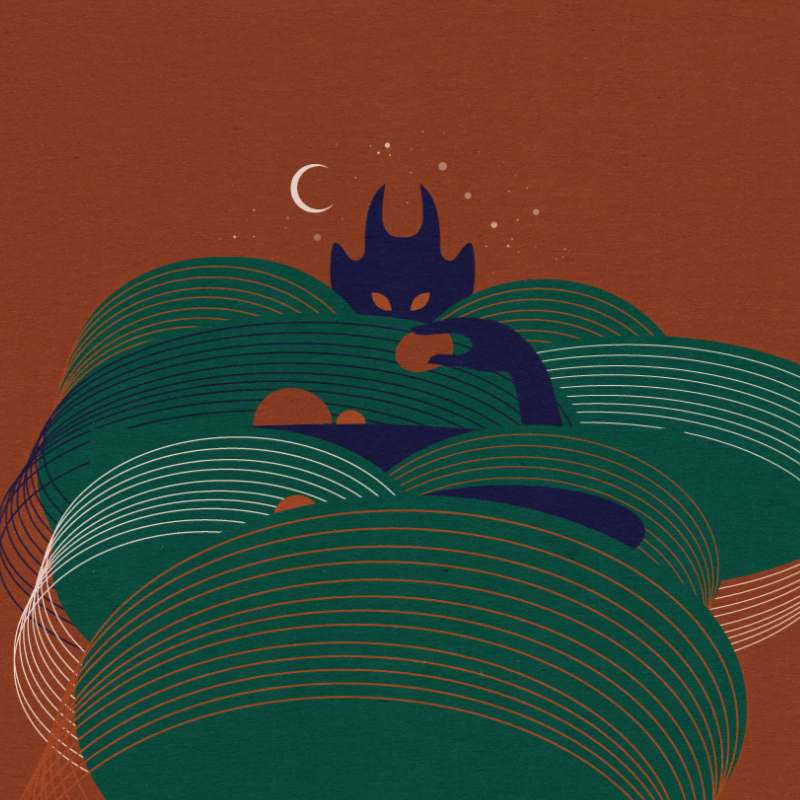Places Where the Devil Appears
> BACK TO 100 STORIESListen to this text (Lithuanian):
The devil is a negative figure in Christianity. It is God’s enemy who seduces humans into sin and tempts them to break God’s commandments. However, in the ancient Lithuanian myths and sagas, the devil was God's helper in creating the world. Of course, he did not listen to God’s instructions, so his creations were not very good. It is said that God created the Earth, angels, and birds while the devil created demons, toads, snakes, and many dark, cold, dangerous, useless things such as swamps, mires, and rocks. Therefore, the name of the devil in the Lithuanian language is used not only when cursing (one of the most popular curses is po velnių [Eng. damn it]), but also when coming up with names for natural objects and places supposedly related to the devil.
There are about 400 “devilish” place names in Lithuania. Most of them are the names of mires, marshes and swamps, as well as ravines, meadows, pastures, streams, lakes and hills. In other words, the devil’s creations bear his name – places avoided by people, especially at dusk.
In old Lithuanian tales, the devil is usually seen by the water. It was believed that he lived in the water or under the water in lakes and mires. The dead who were sent to the devil also lived there. Sometimes the devil would tell people about a lake flying past in the shape of a cloud. It would land on the ground if someone guessed its name. But the devil was sneaky: the lake would flood pastures, cultivated fields or even villages with all the inhabitants.
The devil also hangs around rocks. It is said that God plants potatoes and the devil plants the stones. Sometimes the devil brings stones to build a bridge or road, but more often – to destroy a church. The devil carried Puntukas, the second largest stone in Lithuania, to destroy the Anykščiai church, but lost it because a rooster crowed. In some tales, the devil left a hoof imprint in the stone, which was filled with water that had magical properties.
The devil disagrees with Perkūnas [the god of thunder], who is always trying to strike the devil. Some say that Perkūnas is chasing the devil because he once stole Perkūnas’ knife or ax. In other tales, the devil is said to have killed Perkūnas’ wife or daughter. And others claim that God himself wanted to cleanse the Earth from evil and told Perkūnas to persecute the devil.
The devil's kingdom can be accessed through a hole in the mountain. And sometimes the devil himself brings people he has met in remote places or taverns – village bars – to his kingdom. The devil's guests are usually musicians: devils like to hold parties in the dungeons and are constantly looking out for someone to play music. The devil lives in a beautiful palace and is a good host – he feeds the musicians well, gives them gifts, and even offers them a bed for the night. But the devil would not be called the devil if he didn’t play evil jokes on innocent people: when the devil’s guests wake up, they realise that they didn’t sleep in a bed, they actually slept in a swamp, and the precious gifts turn into stones and toads.

